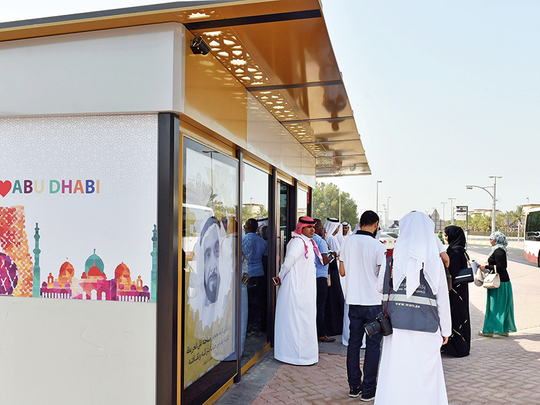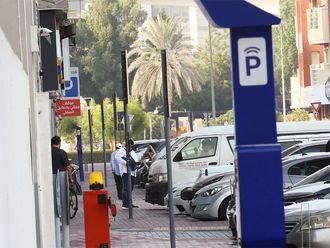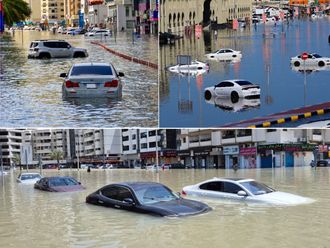
Abu Dhabi: The number of air-conditioned bus shelters in the capital will double by the end of the year as the Abu Dhabi Department of Transport works to make public transport more convenient for residents, a senior official said in the capital on Sunday.
A total of 100 new air-conditioned bus shelters are currently being built at a cost of Dh35 million, and the existing 130 bus shelters are being refurbished and maintained to ensure that facilities are in full working order, Ahmad Al Mazroui, head of buses and water ferries a the Department, told Gulf News.
“The plan is to set up 600 air-conditioned bus shelters in the emirate by 2020, with 400 of them in Abu Dhabi City and Al Dhafra region, and 200 in Al Ain,” Al Mazroui said.
“The new bus shelters are being built in areas where they are most-needed, and their size depends on the number of commuters who use the particular stop. Twenty-three of the new shelters have already been completed, and the remaining are expected to be operational by the end of the year,” he added.
The Department recorded a total of 52 million passenger trips by bus last year. Commuters used 650 buses serving more than 95 service routes in Abu Dhabi, Al Ain and Al Dhafra.
“There are 4,000 bus stops across the emirate, with 2,000 in the capital city alone. The new bus shelters will be located in the stops that see the biggest gathering of commuters,” Al Mazroui explained.
For instance, a number of new shelters have been added across Shaikh Rashid Bin Saeed Street, known popularly as Airport Road, and along Sultan Bin Zayed the First Street or Muroor Road.
Many of the new shelters are six metres long, and can accommodate 12 people who are standing, based on international standards that allocate about five square metres of space per person. Other shelters that are nine metres long can accommodate 22 people, and about 30 people can fit into the shelters that are 12 metres in length.
In comparison, the older bus shelters could accommodate about 10 people standing at a time.
Each of the shelters are air-conditioned and monitored by CCTV cameras. They also include machines that commuters can use to top up their Hafilat bus travel cards.
“The new shelters feature an Arabian/Islamic geometric design, and also have shaded seating areas outside the air-conditioned space. There is also room to accommodate wheelchairs, especially as our intercity buses are all designed to accommodate individuals with special needs,” Al Mazroui explained.
The shelters are cleaned and maintained regularly by public facilities management firm, Musanada.
Al Mazroui added that the capital’s biggest bus shelter will soon become operational opposite the main bus terminal on Sultan Bin Zayed the First Street.
“This shelter spans 16 square metres, and can accommodate about 60 standing people at a time. Nearly 45 bus services pass by this stop, so we needed a big shelter to accommodate commuters,” he said.
In addition, 20 new bus shelters have been built out of refurbished cargo containers to serve stops that see small volumes of commuters.
“These containers allowed us to set up shelters very quickly in areas that required them. Some of them will eventually be developed into permanent structures if the need arises,” Al Mazroui said.
At the same time, 62 old shelters have been demolished in areas that did not see sufficient commuter volumes.
Bus users
► 52 million passenger trips in 2017
► 650 buses servicing 95 routes
► 4,000 bus stops, with 2,000 in Abu Dhabi city
► 100 new bus shelters by the end of 2018 in Abu Dhabi City
► 130 existing shelters to be refurbished
By 2020
► 400 shelters in Abu Dhabi and Al Dhafra
► 200 shelters in Al Ain












